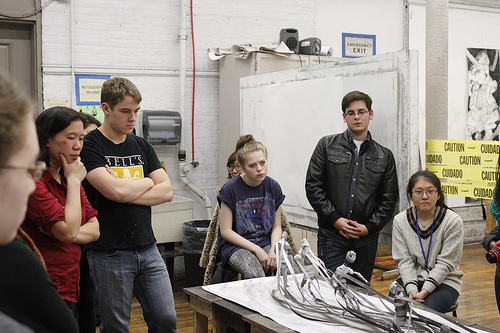Ask the Art Professor: What are common mistakes in college portfolio submissions?
Welcome to “Ask the Art Professor“! Essentially an advice column for visual artists, this is your chance to ask me your questions about being an artist, the creative process, career advice, a technical question about a material, etc. Anything from the smallest technical question to the large and philosophical is welcome. I’ll do my best to provide a thorough, comprehensive answer to your question. Submit your question by emailing me at clara(at)claralieu.com, or by posting here on this blog. All questions will be posted anonymously. Read an archive of past articles here.
“This year, I’ll be a junior in high school. It feels like this is my last year to improve my techniques before working on portfolios for college…sometimes it’s too much pressure to think about how I’ll be stacked up against many talented kids my age during the college submission process. Everyone is so wonderful and talented! What are common mistakes in submissions? What shows the difference between a weak student and a strong student? I have one year left to prepare – what should I specifically focus on to improve my chances?”‘
A strong student will command not only technical mastery over their material, but also be innovative and passionate in terms of their subject matter and approach. On the flip side, you can have a weak student who may have good technique, but perhaps is working with subject matter that is obvious and cliche. A strong student’s work will stand on it’s own, and not look like it’s lifted from some other artist or style. A weaker student might copy something from somewhere else. Strong students are prolific and experimental with their art materials; they are willing to try out unusual methods for handling their art materials. At the opposite end of the spectrum, a weaker student might use the same art materials all the time, and use them in a predictable, common manner.
There are a number of “classic” mistakes that I see over and over again when evaluating portfolios for college. I can guarantee if that if you avoid these mistakes like the plague, that you will automatically have a major advantage over a significant portion of the other applicants. Remember, admissions officers have looked at literally thousands of portfolios, and most of these mistakes are nothing new to them. Making any of these mistakes will get you eliminated from the acceptance pile very quickly.
In conjunction to this list below, also be sure to read this article I wrote, which talks about what you can specifically focus on to improve your chances.
1) Copying from photographs. To a trained eye, it’s generally glaringly obvious when something has been copied from a photograph. Drawing from a photograph is a cheap shortcut. Not only are the results always lousy, but copying from photographs will only develop bad habits that will be difficult to “undo” later. (read this article I wrote which states reasons for why you should draw from direct observation)
2) No anime, manga, or fan art. Period. Don’t even think about it.
3) Poor quality photographs of the art itself. Invest the time and money into photographing your artwork properly. Too often I see terrible photographs of good artwork, which makes me nuts. With digital photography, this is affordable and easy to accomplish, it just takes time and labor. This means properly cropped images, even lighting throughout the image, images that are in focus, etc.
4) Blank backgrounds. Art students in high school will frequently create images focusing so much on their main subject matter that they leave the background blank. Be the exception and work on the background as much as you work on everything else in the image, and create backgrounds that are just as lively and engaging as the main subject.
Related articles:
“What is the purpose of a degree in fine art?”
“What should you include in an art portfolio for art school or college?”
“When you have a fine arts degree, what do you do for the rest of your life?”
“How do you preserve your artistic integrity within the strict time limitations in an academic setting?”
“Is art education really so popular in western countries?”
“What do you do after you’ve finished formalized training?”
“Should art students study abroad even if it distracts from job preparation?”
“Who should you make art for, yourself or your professor?”






